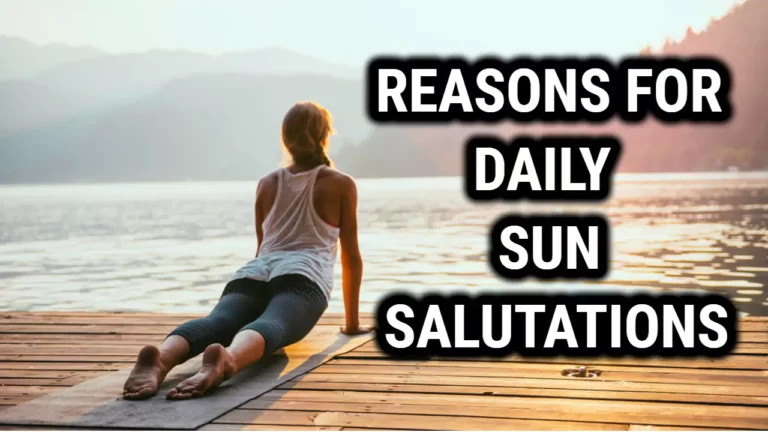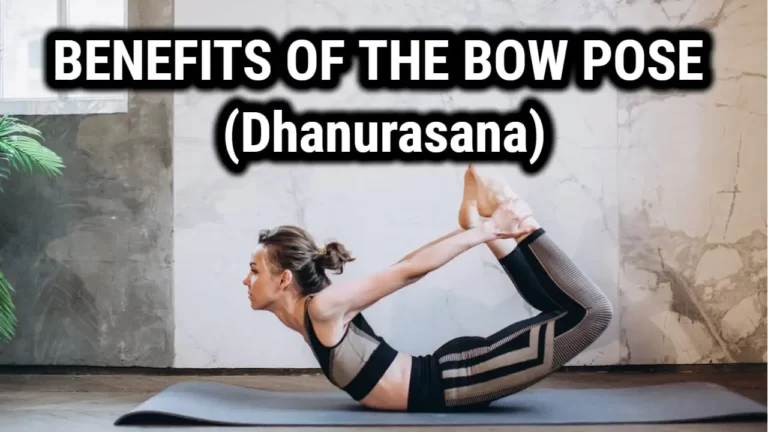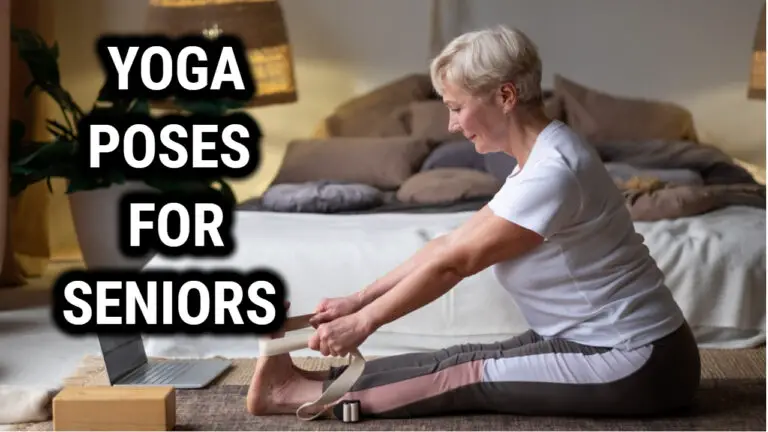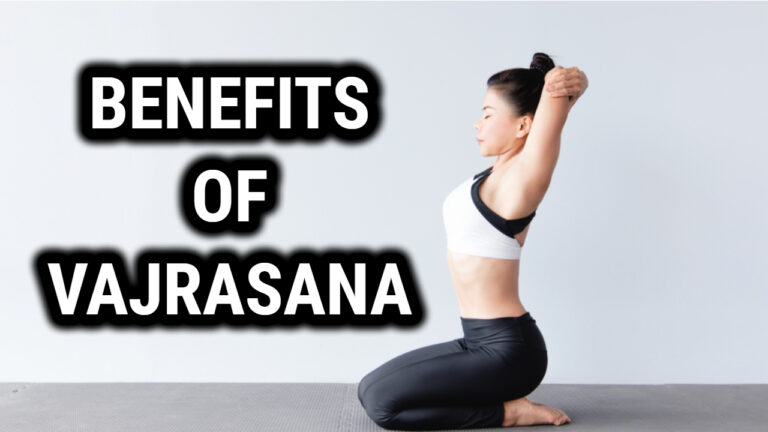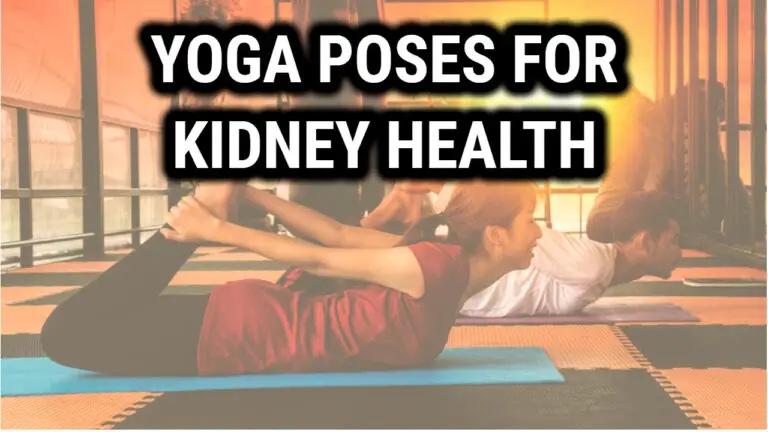What Are Some Extreme Yoga Poses – 32 Advanced Yoga Poses for A Yogi
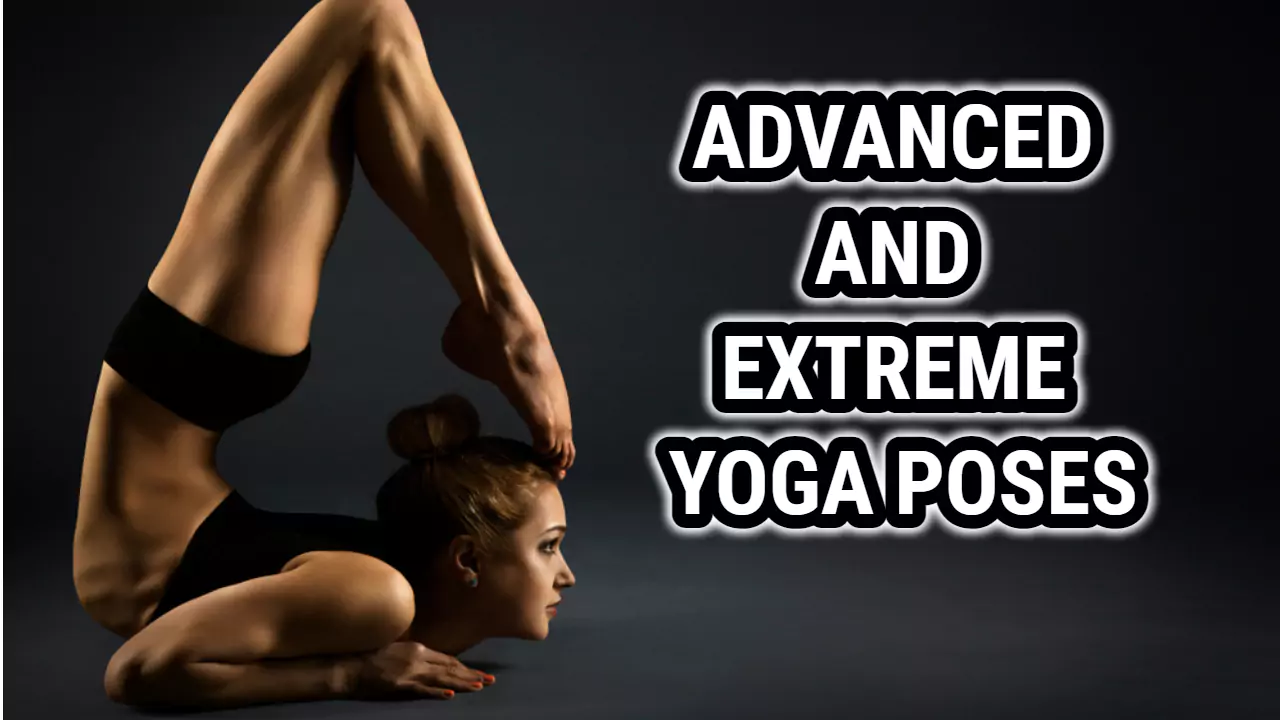
Yoga is an ancient practice that is now widely popular among people of all ages. It offers a wide range of physical and mental benefits.
For those looking to push their practice to the next level, extreme yoga poses are a great way to challenge your body and mind. In this article, we’ll look at some of the most extreme yoga poses and the benefits they offer.
So get ready to take your practice up a notch!
Benefits of Yoga:
Yoga’s an excellent way to improve muscle tone and endurance. You can become more flexible and strengthen muscles with regular practice, making you more fit and healthy. Many poses challenge strength and flexibility, such as the Crow Pose, Side Plank, and King Pigeon Pose.
Muscle tone
Tighten and tone your muscles with these challenging postures!
The Crow Pose is great for strengthening the arms, shoulders, and core, as well as improving balance. Taking it up a notch, the Handstand requires you to use your entire body to fight against gravity while keeping your balance.
The Wheel Pose is an intense backbend that increases strength in the spine and opens the chest, hips, and shoulder. For an even more difficult backbend, try the King Pigeon Pose, which requires flexibility in the hips and opens up the chest.
Finally, the Eight Angle Pose is an extreme hip opener that requires a lot of balance and flexibility in the hips. When performed regularly, these extreme poses can help you tone and strengthen your entire body.
Endurance
For an extra challenge, build your endurance with long-held poses that require strength and focus to stay in the posture.
Scorpion pose and handstand scorpion can be two of the most demanding yoga poses, as they require the practitioner to keep their body in a single position for an extended period. The destroyer of the universe and head to foot pose can also be great poses to work on your endurance. Finally, the one-legged king pigeon pose can be a great pose to challenge your level of endurance.
All of these poses require intense focus and strength to maintain the posture, so it’s important to practice regularly in order to build your endurance and progress.
Advanced Yoga Poses:
Are you looking to advance your yoga practice? There are many challenging poses to choose from, such as Chin Stand, Dhanurasana (Bow Pose), Compass Pose, Boat Pose, Crow Pose, Gomukhasana (Cow Face Pose), Astavakrasana (Eight-Angle Pose), Ardha Chandrasana (Half Moon Pose), Flying Crow, Tittibhasana, Forearm Stand, Tolasana (Scale Pose), Headstand, Eagle Pose, Elbow to knee pose, Lizard variation, Plow pose, Mermaid pose, Forearm hollow back pose, Dancer pose, Hanumanasana, Side crow, Lotus pose, Side plank with lifted leg variation, One-legged king pigeon pose, Standing hand to big toe, Scorpion handstand, Standing forward fold to tripod headstand press, Forearm scorpion, Wild thing into bow pose, Twisted floor bow pose, One-legged crow pose, and more.
If you’re ready to take your practice to the next level, why not give one of these advanced poses a try? You won’t regret it!
1. Chin Stand
Balancing on your chin can be a real challenge, but with practice, you can master it! The chin stand is an advanced yoga pose that requires a lot of core strength and balance. It is one of the most difficult yoga poses to do, but with patience and dedication, you can eventually perfect it.
The chin stand is an effective way to deep stretch the spine and work on your core muscles. It can also help to improve your overall balance and increase your flexibility. To do the chin stand, you should begin by getting into a plank position and then slowly lower your chin to the floor. From there, you should slowly lift your legs off the ground and attempt to balance on your chin.
It is important to keep your core engaged and your legs straight during this pose. With practice, you can eventually master the chin stand and reap the benefits of this advanced yoga pose.
2. Dhanurasana (Bow Pose)
Dhanurasana, or Bow Pose, is a demanding pose that requires strength, flexibility, and balance to master. In this pose, you lie face down and bend your elbows, lifting your chest off the floor and grasping your ankles with your hands.
You then lift your thighs, chest, and head off the ground, and as you inhale, you press your feet and elbows into the ground to lift your thighs, chest, and head even higher. It’s important to maintain good posture and keep your elbows close to your body as you hold the pose.
This pose stretches the abdomen, chest, shoulders, and thighs, and helps to improve digestion and reduce stress.
The Lotus position can be incorporated in Dhanurasana as a way to deepen the stretch. To do this, you should place your left foot on your right thigh and your right foot on your left thigh. From this position, you can extend your arms to reach for your ankles and lift your thighs and chest off the ground.
This posture helps to increase flexibility in the hips and strengthens the forearms and elbows. Additionally, it helps to create a sense of balance and stability.
3. Compass Pose
Compass Pose, is a challenging pose that requires strength, flexibility, and balance to master – perfect for those looking to take their practice to the next level!
To enter Compass Pose, begin in Plank Pose and slowly lift your legs off the ground. Then, swing your feet up and over your head, and bring them to the ground behind you. From here, you will hold yourself on your hands and your feet, creating an inverted V-shape.
Once you are in the pose, you can transition into King Pigeon Pose or even the more advanced Mayurasana.
Remember to take it slow and listen to your body as you work towards mastering Compass Pose!
4. Boat Pose
Now, let’s move on to another extreme yoga pose: Boat Pose! It’s a challenging balancing posture that requires a lot of core strength and balance. Advanced yogis who are looking for more of a challenge will enjoy this pose.
To get into the pose, sit with your knees bent and feet flat on the floor. Raise your feet off the ground and reach your arms forward. Use your core to hold your body in the shape of a V. Hold the pose for a few seconds or as long as you can.
Boat Pose is one of the most difficult poses to perform in extreme yoga, so practice it with caution.
5. Crow Pose
Try out Crow Pose to test your balance and core strength! This pose requires you to hold your body in an inverted V shape with your hands and feet firmly planted on the floor. See how long you can stay in the pose for and challenge yourself to master it.
To kick things up a notch, you can try the one-legged crow pose. This pose requires you to lift one leg off the ground and balance your body with the other. This pose relies heavily on your core strength and balance to stay balanced.
For an even bigger challenge, take on the one-handed tree pose. This pose requires you to lift one arm off the ground and balance your body with the other.
Finally, if you think you’ve mastered the crow pose, try your hand at the destroyer of the universe pose. This pose requires you to flip your body upside down and balance your body on your hands. Use your core strength and balance to stay in the pose for as long as you can.
6. Gomukhasana (Cow Face Pose)
This pose takes your yoga practice to the next level? Gomukhasana (Cow Face Pose) is a challenging pose that requires flexibility, strength, and balance!
This extreme yoga pose is derived from the Sanskrit words Go (Cow), Muka (Face) and Asana (Pose). This pose is a great way to stretch the upper body and give your back a deep backbend. The upper body is the main focus in Gomukhasana, as the arms and shoulders are stretched and extended in opposite directions.
To achieve this pose, sit with your legs crossed and spread out in opposite directions. Then, hold your left arm up, bend it behind your back, and reach around to grasp your right hand. If you can reach your right hand, hold your right arm up and grasp the left hand.
Inhale deeply and hold the pose for up to a minute. Remember to always keep your spine straight while in the pose. With some practice and patience, you’ll be able to master this extreme yoga pose!
7. Astavakrasana (Eight-Angle Pose)
Transitioning from Gomukhasana (Cow Face Pose), you may want to try Astavakrasana (Eight-Angle Pose). This yoga pose is an arm balance that requires advanced yoga practitioners to use their strength, balance, and flexibility to reach the full pose.
It is an intense pose that calls for careful preparation. To get into this pose, you may need a yoga block to help you balance. As you hold the pose, your body will be forming an eight-angle shape.
It targets your arms, shoulders, and core, making it a great pose for toning and strengthening those areas.
8. Ardha Chandrasana (Half Moon Pose)
Get ready to challenge your balance with Ardha Chandrasana (Half Moon Pose)! This pose requires you to use your strength, flexibility, and balance to form a half-moon shape with your body. It targets your arms, shoulders, and core, making it a great pose for toning and strengthening these areas.
This pose is often seen as a precursor to more advanced poses such as Eka pada koundinyasana, Forearm hollow back pose, Handstand scorpion pose, Twist floor bow pose, and Tree pose.
To properly perform Ardha Chandrasana, begin by standing in Tadasana (Mountain Pose). With your arms in a “V” position, side bend and reach your right hand to the floor. Lift your left arm up and back, and reach your left toes back. Turn your left toes out and push your hips back.
Engage your core and slowly begin to lift your torso and left leg away from each other, forming a half-moon shape with your body. Hold this pose for five breaths and then slowly lower your left foot and right hand to the floor. Repeat on the other side.
9. Flying Crow
Try your hand at the Flying Crow Pose to test your balance and strength! This advanced yoga pose is one of the most difficult yoga postures to master, and not for the faint of heart.
It requires a combination of core and arm strength to lift and balance your body in the air. As the name implies, the Flying Crow requires you to mimic a crow mid-flight, with the feet off the ground and the head facing forward.
To get into the pose, start in a squat position with your arms extended in front of you. Then, place your hands on the ground and shift your weight onto them. From there, you can lift your feet off the ground and bring your knees to your upper arms.
With practice, you will eventually be able to balance your entire body in the air. So, whether you’re a seasoned yogi or a beginner, give the Flying Crow a try and see how far you can go!
10. Tittibhasana
Moving on from the Flying Crow, let’s take a look at the next extreme yoga pose, Tittibhasana. This pose is an advanced arm balance that requires immense strength and flexibility, and is the perfect way to challenge yourself and take your practice to the next level.
To perform this pose, start in a standing position and lean forward, placing your hands flat on the ground. Tilt your head back and raise one leg off the ground, and then wrap your arms around the standing leg. Once you have achieved the correct form, hold the pose and balance your weight between your arms and standing leg.
This pose requires upper body strength and stability, as well as a strong core and leg muscles to maintain the balance.
11. Forearm Stand
Take your practice to the next level with Forearm Stand, an advanced inversion that requires strength, balance, and courage.
This pose is more commonly known as Pincha Mayurasana, and it’s a pose that every yogi should strive to master.
To begin, start in a plank position while engaging your core. Make sure to keep your wrists directly under your shoulders and your feet hip-width apart.
With the help of a yoga instructor, slowly lift one foot off the floor and swing it up and over your head. As you do this, your body will be supported by your forearms.
To keep your balance, keep your arms straight and engage your hamstrings. Once you find your balance, you can optionally raise your upper body up and hold Peacock Pose.
To complete the pose, bring your leg down and then switch to the other side. If you need more of a challenge, you can even turn your head to make Face Pose.
12. Tolasana
Tolasana, also known as Scale Pose, is an arm-balancing pose that requires strength, focus, and stability to maintain. This extreme yoga pose is designed to strengthen the core, as well as challenge your balance and build up your arm and shoulder strength.
To get into Tolasana, start in a kneeling position with your feet flat on the floor, and press your hands firmly into the floor, fingers spread wide. Inhale and raise your hips as you straighten your legs, extending your arms up in the air. Balance on your hands and toes, keeping your core engaged, and your legs and arms straight.
Hold the pose for a few breaths, then slowly lower your legs and arms back to the starting position. Tolasana is a great pose to add to your regular yoga practice, as it’ll help you build strength and balance.
13. Headstand
Headstand will have you feeling on top of the world as you challenge your balance and strengthen your core! Also known as Eka Pada Sirsasana, Headstand is a challenging inversion that requires balance and strength.
To enter the pose, enter into a modified version of Lotus Pose by crossing your legs and bringing your calves to your side. Place your hands on the floor by your head, with your elbows bent and your forearms resting on the ground. Engage your core and slowly lift your feet off the floor. Your feet should be in a vertical position, with your toes pointed towards the ceiling.
Hold the pose for as long as it feels comfortable, and then slowly lower your feet back to the ground. To come out, tuck your chin and slowly lower yourself back down to the ground, and take a rest in Corpse Pose.
If you’re looking for a variation, Dolphin Pose is a great alternative.
14. Eagle Pose
Try Eagle Pose to challenge your balance and flexibility as you wrap your arms and legs around one another!
Eagle Pose is a standing yoga asana that requires you to cross your right arm over your left arm and your left leg over your right leg. Your arms should wrap around each other and your right thigh should be pressing against your inner left thigh. Your left foot should be placed over your right calf and your left big toe should be pressing against your right ankle.
This pose is great for improving your balance and flexibility and you should make sure to engage your core to stabilize your body. Eagle Pose is a great way to challenge your body and mind and can be a great addition to any yoga practice!
15. Elbow to knee pose
This pose, known as the Elbow to Knee, is a great way to strengthen and stretch your core. To perform the Elbow to Knee Pose, you’ll need to begin in a sitting position with your legs extended out in front of you.
Bend your right knee, bringing your right thigh to your chest. Place your right elbow to the outside of your right knee and your left elbow to the inside of your left knee. Make sure that your hips and knees remain stacked as you press your elbows into your legs.
Hold this pose for up to one minute, and then switch sides. Make sure to take your time with this pose and always ask for help from a qualified yoga teacher if needed.
16. Lizard variation
The Lizard variation provides an interesting variation to the Elbow to Knee Pose, offering a unique way to stretch and strengthen the core.
To do the Lizard variation, start in a low lunge position with your front knee bent at a 90-degree angle and your back leg straight and extended. From there, lift one arm off the floor and place it on your front thigh while you reach your other arm back and place it on the floor. This will form a triangle with your body.
To make this pose even more challenging, you can lift one leg off the floor and keep it straight.
This variation is one of the harder yoga poses and is excellent for building core strength. It’s also an excellent way to add some challenge to your yoga practice as it’s one of the more challenging yoga poses.
17. Plow pose
You can challenge and strengthen your core further with the Plow Pose, a pose that requires you to lift your legs up and over your head. This pose is considered to be a more advanced level of yoga, so it’s best to practice it with a qualified yoga instructor or someone with more experience in yoga.
To perform the Plow Pose, you’ll need to lie flat on your back and then bring one foot onto the floor while lifting the other one over your head and towards the ground. You must ensure your back is straight and your arms are supporting your lower back.
Once you’re in the pose, hold it for up to a minute and then switch sides. The Plow Pose is a great way to improve your core strength and flexibility. However, it should be practiced with caution and only with the help of a qualified yoga instructor.
18. Mermaid pose
Mermaid Pose can be an intense stretch, offering a unique way to open your chest and strengthen your spine. This pose requires you to bring your feet together, place your hands behind your back, and lift your chest.
It is considered an advanced pose because it is quite difficult to hold, and requires the strength of your arms and core. To perform the Mermaid Pose, you should first get into a kneeling position and then press your feet together.
Place your hands behind your back, with your palms facing inwards. Then, press your feet and hands into the ground and use your core to lift your chest. Keep your chest open and your gaze focused ahead of you.
Hold this pose, while using your arms and core, for as long as you can. Mermaid Pose is a great way to open your chest and strengthen your spine, while also improving your balance and stability.
19. Forearm hollow back pose
Forearm Hollow Back Pose is an intense stretch that requires the strength of your arms and core to help you open your chest and strengthen your spine. This pose requires extreme flexibility and strength from your body, so it’s important to make sure your body is warmed up before attempting this pose.
The pose looks formidable at first, but once you get your body into the pose, you’ll find that it strengthens the spine and creates an open chest. It’s important to practice caution when attempting this pose, as it can be quite difficult for beginners.
With patience and practice, the Forearm Hollow Back Pose can become a part of your yoga practice.
20. Dancer pose
Dancer pose, also known as Natarajasana, is an invigorating stretch that challenges your flexibility and balance while opening up your chest and back. It is considered one of the most difficult advanced asanas to master. Your yoga teacher will likely demonstrate the pose before guiding you through it.
To begin, bring your legs together and stand on one leg. Bend the other leg and reach behind you to grab the foot, then bring your foot up towards the ceiling while leaning forward. Bring your arms out in front of you and balance on the standing leg. This pose requires a great deal of focus and balance, and may take some time to master.
21. Hanumanasana
You’ll find Hanumanasana, named after the Hindu deity Hanuman, a challenging and rewarding pose that will test your flexibility and balance. This pose involves a deep lunge with one leg behind you, making it one of the more difficult yoga postures and is typically attempted by advanced practitioners.
To complete the pose, you’ll need to begin by leaning forward and placing your hands onto your forearms. Then slowly lower your chest towards the floor as you extend your rear leg behind you. With practice and dedication, this pose is achievable and can be great for improving your flexibility.
22. Side Crow
After mastering Hanumanasana, you may be ready to try Side Crow. Side Crow, or Parsva Bakasana in Sanskrit, is a challenging arm balance that requires quite a bit of upper body strength and core stability. This pose is one that many yogis have been striving for yoga for years, and is often considered one of the more difficult poses.
However, if you’ve been practicing yoga for some time, and you feel like you’re ready to take your practice to the next level, Side Crow is definitely worth attempting.
To get into the pose, begin in a low squatting position with feet together, and then lean onto your left forearm and bring your left knee to the back of your left tricep. While maintaining balance on your left arm, reach your right arm up in the air, and as you feel ready, begin to shift your body weight onto your arms and slowly lift your feet off the ground.
It may take some time to get used to the feeling of balancing in the pose, and you may even want to start with a block to ensure stability. With patience and practice, you’ll find that Side Crow is like the easiest pose you ever did.
23. Lotus Pose
Lotus pose, or Padmasana, is a seated posture that requires deep flexibility and meditation-like concentration to perfect. It’s a basic pose that is often used in meditation, and it can be a great way to open up your hips and stretch your legs.
To get into the pose, start by sitting on the floor with your legs straight out in front of you. Bend your right knee and bring the leg to the center of your body, placing the sole of your right foot on your left thigh. Then, bend your left knee in the same way and bring it to the center of your body, placing the sole of your left foot on your right thigh. You should now be in a cross-legged position.
Place your hands on your knees and press your shoulder blades into your back. Focus your gaze straight ahead and take deep breaths to help you relax your body and mind. Make sure to keep your spine straight throughout the pose and stay in the position for as long as you feel comfortable.
24. Side Plank With Lifted Leg
Embrace the challenge of the side plank with lifted leg variation, and take your practice to a whole new level of strength and stability.
Begin in a side plank position with your feet stacked and your top arm extended up in the air. Your weight should be evenly distributed on both of your feet and your forearm.
Lift your top leg up and back, and hold the position for as long as you can. This pose requires a combination of balance and strength, and will help you to build strength and stability in your core, arms, and legs.
You can also increase the intensity by lifting your top arm and placing the hand on top of the hip for extra balance.
As you practice this pose, you will be able to hold it for longer periods of time and build more strength and stability. With regular practice, you’ll be amazed at how strong your body can become.
25. One-legged king pigeon pose
Experience the challenge of one-legged king pigeon pose and take your practice to a whole new level of flexibility and strength. This pose requires you to balance on one foot as you extend your other leg behind you, while keeping your hips square and your chest lifted. Your arms will be extended up towards the ceiling as you reach for a greater level of flexibility.
To get into the pose, begin in a kneeling position and slowly move your extended leg back behind you. As you come into the pose, take a few breaths and feel the strength and balance in your body. Make sure to keep your hips square and your chest lifted as you hold the pose.
With practice, you may be able to work towards a deeper level of flexibility and strength. This pose can be quite a challenge, but with a little dedication and practice, you’ll be able to experience its full potential.
26. Standing hand to big toe
Feel the challenge of standing hand to big toe and take your practice to a whole new level of balance and strength.
This pose is an advanced version of utthita hasta padangustasana, or extended hand to big toe pose. It requires balance and strength, as you slowly lift one foot off the ground, reaching your hand to your toes.
As you do this pose, feel your core engaging and your leg and glutes strengthening as you balance on just one foot.
Standing hand to big toe is a great way to take your yoga practice to the next level. Working on your balance and strengthening your core and lower body muscles can help you become more mindful and more aware of your body.
This pose is an excellent way to improve your overall yoga practice and take your physical and mental health to the next level.
27. Scorpion Handstand
Moving on from the Standing Hand to Big Toe pose, let’s take a look at the Scorpion Handstand. This extreme yoga pose is a challenging inversion that requires a lot of upper body, core, and balance strength. It’s not for the faint of heart, but with practice, you can master it!
To get into the pose, begin in a handstand position. Then, slowly lower your feet towards the back of your head until your toes touch the floor. As you move into the pose, keep your core and legs engaged and your spine straight. When you feel comfortable, you can reach your arms back and grab onto your ankles.
Hold the pose for as long as you can and enjoy the upside-down view!
28. Standing Forward Fold
Gently bend forward, bringing your chest to your thighs, and press your palms firmly into the floor as you lift your head and shoulders up into a tripod headstand. This advanced yoga pose is called a standing forward fold to tripod headstand press. It requires a great deal of balance and core strength to remain in the position for an extended period of time.
To prepare, start in a standing position with your feet hip-width apart. Place your palms on the ground, shoulder-width apart, and take a deep breath in. As you exhale, slowly fold forward, hinging at the hips and reaching your arms out in front of you. Your palms should now be firmly planted on the ground.
Engage your core and slowly lift your legs and torso off the ground, bringing your hips into a tripod headstand position. Keep your gaze steady and your breath even as you maintain this pose. With practice, you’ll be able to stay in this position for longer periods of time.
29. Forearm Scorpion
From the tripod headstand, gradually lower your legs towards the ground, arching your back and bringing your feet to rest just above your head in a graceful forearm scorpion pose.
This advanced inversion is an awe-inspiring pose that requires strength and balance in equal measure. Exhale as you bend your elbows, and carefully raise your legs, directing your feet towards the ceiling.
Feel your quadriceps and hamstrings stretch as you balance your bodyweight on your forearms. As you come into the full expression of forearm scorpion, you’ll be amazed at the depth of the stretch and the sheer strength it requires.
Hold the pose for up to one minute, breathing deeply, before slowly lowering your legs back to the floor.
30. Wild Thing Into Bow Pose
Easing from wild thing into bow pose, you’ll feel your back open up as you flow between these two graceful poses.
In wild thing, you start by balancing on your hands and feet, raising your hips to the sky and keeping your core engaged. This pose helps to open up the chest and the shoulders, while strengthening the upper body.
To move into bow pose, you start by lying down on your belly and reaching your arms back to grab your ankles. As you press your feet and hands into the ground, you lift your chest and legs off the ground, creating a bow shape. This pose helps open the chest and shoulders even more, while also stretching the front of the body.
Both poses are great for releasing tension in the back and stretching the entire body.
31. Twisted floor bow pose
Twisting your body into floor bow pose, you’ll feel your muscles open up as you move between these two powerful postures.
Floor bow pose is an advanced yoga pose that requires a great deal of core strength and flexibility. To get into the pose, you’ll need to start in a prone position, with your arms and legs extended. From this foundation, you’ll need to bring your arms and legs up into a bow shape, with your arms reaching towards your feet and your legs extending behind you.
You can use your arms to help you twist your torso to the side, deepening the stretch in your core muscles. As you move into the pose, focus on your breath and make sure to keep your chest open.
With some practice, you’ll be able to stay in the pose for several breaths, feeling your body open up and your muscles stretch.
32. One-legged crow pose
Take your yoga practice to the next level with one-legged crow pose! This challenging pose will help you build strength and flexibility in your core and arms while also strengthening your balance.
To get into this pose, start in a low squat position with your feet slightly wider than shoulder-width apart. Place your palms flat on the ground in front of you, with your fingers spread wide. Now, shift your weight onto your palms, while straightening your legs and lifting your feet off the ground.
Lift one foot off the ground and rest your shin and foot against the opposite inner-thigh. Hold this pose, keeping your gaze fixed forward and your breath steady.
With patience and practice, you can master this advanced yoga pose and reap its many benefits.
FAQ’s
Q: What are extreme yoga poses?
A: Extreme yoga poses are advanced yoga positions that require a high degree of strength, flexibility, balance, and focus. These poses are usually not recommended for beginners and require an experienced yoga practitioner to execute them safely.
Q: What is scorpion pose?
A: Scorpion pose, also known as Vrschikasana, is an advanced yoga posture that involves balancing on the forearms and lifting the legs up and over the head, resembling a scorpion’s tail.
Q: What is handstand pose?
A: Handstand pose, also known as Adho Mukha Vrksasana, is an advanced yoga posture that requires the practitioner to balance on their hands with their legs extended vertically upwards.
Q: What is lotus pose?
A: Lotus pose, also known as Padmasana, is a seated yoga posture that requires the legs to be in a cross-legged position with the feet placed on the opposite thighs.
Q: What is eka pada pose?
A: Eka pada or one-legged poses are a series of advanced yoga postures that require balance, flexibility, and strength in the legs and core. These postures usually involve balancing on one leg with the other leg extended out straight.
Q: What is headstand pose?
A: Headstand pose, also known as Sirsasana, is an advanced yoga posture that requires the practitioner to balance on their forearms with the head resting on the ground.
Q: What is face pose?
A: Face pose, also known as Mukha Facedown Asana, is an advanced yoga posture that involves lying facedown on the mat with arms and legs extended and lifted off the ground.
Q: What is king pigeon pose?
A: King pigeon pose, also known as Kapotasana, is an advanced yoga posture that requires the practitioner to stretch the hip flexors, quads, and chest while simultaneously balancing on one leg with the other leg bent backwards and held in the hand.
Q: What are some tips for practicing hard yoga poses?
A: Some tips for practicing hard yoga poses include warming up properly, engaging the core muscles, stretching the inner thigh muscles, using props and supports as needed, and being patient with the process.
Conclusion
Yoga can be a great way to challenge yourself and gain physical and mental benefits. There are many extreme poses that can help you take your practice to the next level. If you’re looking for a way to push yourself and break through limits, try out some of the more extreme poses.
You may surprise yourself with what you can accomplish. Just be sure to practice safely and have a teacher there to guide you. With dedication and practice, you’ll be able to master the extreme poses and reap the rewards of yoga.
